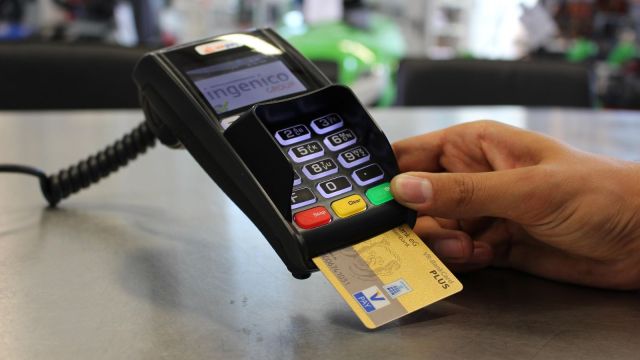Retail credit growth moderates further as loans by new customers decline 21%: Cibil
According to Cibil, younger generations formed the largest cohort of new-to-credit consumers, with Gen Z (born in 1995 or later) comprising 41 per cent.
 Cibil said home loan and credit card originations declined YoY in the three-month period ending December 2024, while the growth rate for other retail loan products, while positive in the most recent quarter, was at a slower rate than in the same quarter in 2023. (Credit: Pixabay)
Cibil said home loan and credit card originations declined YoY in the three-month period ending December 2024, while the growth rate for other retail loan products, while positive in the most recent quarter, was at a slower rate than in the same quarter in 2023. (Credit: Pixabay)India’s retail credit growth continued to lose steam in the quarter ended December 2024, with a significant decline in credit uptake among new-to-credit (NTC) consumers. Consumption-led credit products originated by NTC consumers witnessed a sharp 21 per cent year-on-year (YoY) decline in loan originations, according to a report by TransUnion Cibil.
This slowdown in credit growth is not an encouraging trend, particularly among first-time borrowers who are critical to driving economic expansion. The decline in loan originations suggests that NTC consumers are becoming increasingly cautious in taking on debt, which could impact consumption.
Consumption-led products are defined as credit cards, personal loans and consumer durables loans.
On the other hand, consumers with existing credit showed a decline of only two per cent.
Cibil said home loan and credit card originations declined YoY in the three-month period ending December 2024, while the growth rate for other retail loan products, while positive in the most recent quarter, was at a slower rate than in the same quarter in 2023.
“In the quarter ended December 2024, the share of total loan originations by NTC consumers decreased to 17 per cent from 21 per cent in December 2023. The decline in the share of NTC consumers in loan originations is consistent across key product segments,” it said.
According to Cibil, younger generations formed the largest cohort of NTC consumers, with Gen Z (born in 1995 or later) comprising 41 per cent. “The share of women borrowers stood at 37 per cent of NTC originations, which was higher than the share of women among existing to credit (ETC) borrowers at 27 per cent.
Of new-to-credit consumers, 32 per cent were from rural geographies, while 23 per cent of ETC consumers were from rural geographies. “The higher percentage of women among NTC originations compared to ETC originations, along with the notable presence of NTC consumers from rural areas, highlights efforts by lenders to reach and support these important demographics. These efforts demonstrate a commitment to fostering financial inclusion and ensuring that more individuals have the opportunity to participate in the formal credit system,” Cibil said.
An analysis of TransUnion CIBIL data on consumers who opened their first ever credit product in FY2022-2023 showed that one in three NTC consumers availed a second credit product in the subsequent 12 months. Of the consumers availing the second loan, 44 per cent chose to do so with the same lender, it said.
The acquisition strategies adopted by lenders in response to risk-adjusted returns for unsecured lending products have disproportionately affected the New-to-Credit segment, which represents first-time borrowers,” said Bhavesh Jain, MD and CEO of TransUnion CIBIL.
“India’s youth, women, and consumers in rural areas represent a large share of first-time credit seekers. For India to achieve meaningful, sustainable, and inclusive economic growth, it is imperative to include these consumers into the formal lending ecosystem. Expanding their access to credit directly correlates with improved quality of life and financial empowerment of these individuals,” Jain said.
The continued moderation in credit supply over the past year has decelerated the growth of credit-active consumers. Despite a substantial credit-eligible population, only a small percentage is currently using formal credit facilities, leaving many with limited or no access to formal products. To address this issue, it is imperative to expand and facilitate credit availability and enhance financial literacy among the credit underserved and newly acquired population, Jain said.
The continued moderation in credit supply over the last four consecutive quarters led to the YoY growth in credit-active consumers slowing down to 9 per cent in December 2024 from 16 per cent in December 2023. According to World Bank data, as of December 2024, India’s credit-eligible population – consumers aged 18-80 years – stood at approximately 1,036 million, yet only 27 per cent (around 277 million) use formal credit facilities. Approximately 451 million Indians have limited or no formal credit facilities, it said.
Cibil said Gen Z forms a significant share (34 per cent) of India’s credit eligible population, but displays the lowest credit penetration at 16 per cent. Among consumers with any credit history ever, the majority of these consumers were credit underserved.
Meanwhile, balance level delinquencies for personal loans have stabilized for the first time since June 2023. The 90 plus days past due balance-level delinquency rate for below prime4 borrowers for personal loans improved to 4.54 per cent in December 2024, a 31-basis point improvement for these consumers compared to 4.85 per cent in December 2023, Cibil said.
In the quarter ending December 2024, Cibil’s credit market indicator (CMI) for credit supply declined to 91 from 95 during the same period the year before. A slower growth rate in originations across products and continued decline in originations to NTC consumers drove this change.



- 01
- 02
- 03
- 04
- 05




























